The only difference between an Irish wedding and an Irish wake is one less drunk. Or so the saying goes…..
In every culture, life and death dance together in a complicated way, but the Irish feel this duality most deeply.
The Irish wake is a unmistakable funeral custom from the Emerald Isle that shows this feeling like nothing else.
It is a unique aspect of Irish culture, where people cry, laugh, sing, cause mischief and think about the person who died.
One can describe it as a heartfelt farewell that also serves as a happy celebration of the person’s life.
What surprises people the most is the level of trickery and pranks that traditionally took place at wakes.
When an older person died, it was certainly not a somber occasion!
This article may contain affiliate links. If you click on one of them, we might receive a small commission (at no extra cost to you). Thanks for your support to help us keep this site running!
Table of Contents
- 1 What is an Irish Wake?
- 2 Irish Wake Origins and History
- 3 What makes an Irish Wake special?
- 4 What’s the difference between a traditional Irish wake and a modern Irish wake?
- 5 Irish Wake Traditions and Practices
- 6 What Do You Say at an Irish Wake?
- 7 Irish Wake Toasts
- 8 What should you bring to an Irish Wake?
- 9 What should you wear at an Irish Wake?
- 10 The Irish Wake in Modern Times
- 11 The Irish Wake in Irish Mythology and Literature
- 12 Irish Wake Frequently Asked Questions
- 13 Irish Wakes
What is an Irish Wake?

An “Irish Wake” is basically a party held soon after someone dies.
In my experience, it is a time where family and friends of all ages get together and remember the person who passed away and use the time to reconnect with each other again.
Usually a wake takes place in the home of the person who died, or their close family.
The word “wake” might make you think of “waking up”.
However, the phrase probably comes from the practice of “watching” or “waking” over the body of a loved one thus keeping them from harm until they are buried.
Typically, family and friends would take turns to sit with the body throughout the entire wake to ensure that the body was never alone.
The traditional belief is that this practice wards away evil spirits.
(Banshees in Irish culture also play an important role in warning a family about an imminent death.)
Wakes are a time for family, friends, and neighbors to get together and pay their respects.
The mourners can take part in a number of traditions that honor the life of the person who died.
Another important aspect of a wake is to bring the community together in grief and be a social occasion.
Irish Wake Origins and History
The Irish wake has roots that go back hundreds of years.
It has been influenced by old Celtic customs, early Christian rituals, and even a little bit of ancient Jewish custom.
There may also be some evidence to suggest that wakes came about after multiple lead poisonings.
Such poisonings may result in a person appearing to be “dead” for a number of hours (or days), only for them later to recover.
By waking the body, this removed the chance of burying a living person.
Wakes act to celebrate the deceased with one last gathering where he or she is the main guest of honor.
They also have long played a role in highlighting the stark difference between life and death.
For many, especially the young, wakes are seen as a reminder that life should be enjoyed and lived by the living.
Traditional wakes that took place in Ireland a century or two ago are quite different to the ones that take place today.
In most cases, the element of fun and mischief are considerably toned down in comparison to what they once were.
What makes an Irish Wake special?
The Irish wake is a way for the whole community to respond to the death of a loved one.
It is hard to describe it exactly, but it is a mix of sadness and joy that is uniquely Irish.
After a person dies, family members usually wash, dress, and lay out the body.
Traditionally the body would have been placed on a bed or a table in an area that was big enough to accommodate the expected crowd of people.
Usually this would have been in the home of the person or a close relative, but sometimes other buildings including barns would also have been used.
Once the wake started the vigil would typically last for at least a day and a night.
This is then later followed by a procession to the church, the funeral and burial.
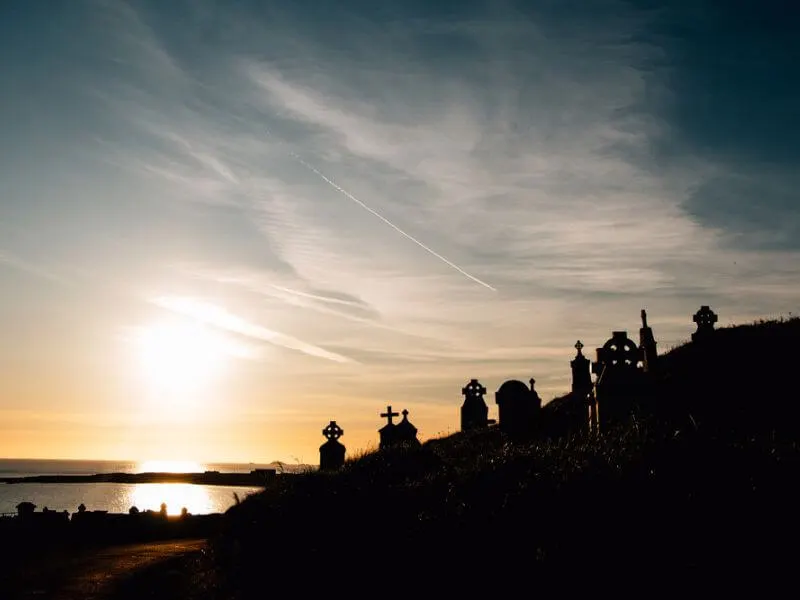
Irish Wakes in Irish Culture
In Irish culture, the wake is seen as a necessary rite of passage.
It gives the community a chance to acknowledge the loss, celebrate the person’s life, and help the people who are grieving.
Death is a sad time, but it’s also seen as a natural part of the cycle of life.
For this reason, a wake can be seen as more of a change than an end.
Irish wakes enable people to share their grief, tell stories and remember the person who died in the comfort of friends, family and neighbors.
Understanding an Irish Wake
A traditional style Irish wake is far removed from the calm, somber event that people usually associate with funeral farewells today.
Irish wakes typically include many different elements of Irish tradition and entertainment.
Prayers and blessings for the dead are seen as only being a minor element of the entire ceremony.
Traditionally, singing, music and storytelling have been particularly popular at wakes.
Keening, or a haunting wailing sound would also have been very common.
Games of all sorts, from cards and pranks, to cock fighting and fist fights also had a place in this ceremony.
You might also be surprised to learn that wakes were also a place for matchmakers and many marriages were finalized at one!
Drinking and raising a glass to the deceased continues to play large parts in the final farewell.
It is fair to say that wakes have always been a social occasion, which plays an important part of the healing process.
What’s the difference between a traditional Irish wake and a modern Irish wake?
A traditional Irish wake was largely community focused gathering.
When the death was not particularly sad or tragic, traditional Irish wakes were typically a celebration with singing, music, games and pranks.
Modern Irish wakes are still community affairs, but are generally more somber in their tone.
Games and trickery are not usually part of the wakes in Ireland seen today.
Characteristics of a Traditional Irish Wake
During a traditional Irish wake, people follow many old traditions.
The body of the dead person is usually put on display in the family home, usually in the main room or “wake room.”
Typically, the body can be viewed. It is sometimes wrapped in a shroud or placed in a coffin.
Mirrors are covered or turned to the wall, clocks are stopped (usually at the time of death), and candles placed near the coffin or close to the body.
People come from the locality and sometimes further afield to pay their respects, offer condolences, and tell stories. They typically stay late into the night.
There is also a degree of merriment, game playing and occasional pranks.
Mourners are offered food and drink. There would typically have been plenty of tobacco and snuff, as well to share in days gone by.
(With stricter tobacco laws in Ireland, this is no longer the case.)
Prayers, as well as the occasional song or story are all part of the ceremony, which is a mix of serious thinking and happy remembering.
Modern Irish Wakes
Many of the same traditions are still part of modern Irish wakes, but there have been some changes. These are due to practicality and changing social norms.
Modern wakes are often held in funeral homes instead of in the homes of the people who died. This is especially the case in cities.
When a person dies, a death notice is usually published in a local newspaper, or online.
One less well known Irish funeral tradition still occurs in some counties in Ireland, such as County Kerry. Every day the local death notices are read on the radio.
Typically, the dead person is brought to a funeral home the day after they die.
They repose at this location until the removal to a church takes place.
At the funeral home, the coffin may be open and the deceased visible to the mourners, or closed depending on the wishes of the immediate family.
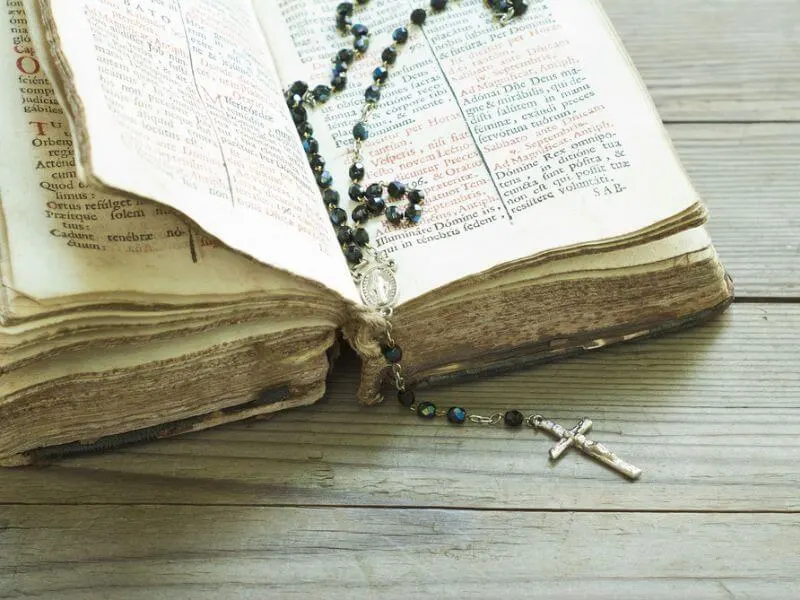
Prayers are typically said during the evening as part of “The Removal” in the funeral home.
The coffin is then usually brought to the church for the funeral and burial, which is held on the next day.
Very often the entire process takes only two to three days until the deceased is buried.
Even though socializing is still a big part of modern wakes, they are typically quieter and focus more on formalities like eulogies and religious services.
However, the modern wake, or removal, provides a possibility for the community to come together to celebrate a life and share grief.
Factors That Have Influenced the Changes
Several things have led to the changes in way wakes are performed.
Changes in Irish society, like more mobility and the effect of the diaspora, have also had an effect on how wakes are held today.
A decline in rural populations as people move to cities has certainly contributed to this.
Family structures are also different and not all the members of a family live close by anymore.
People have also become less religious and often want more privacy when grieving.
Irish Wake Traditions and Practices
Usually, the wake starts with the body being cleaned and laid out.
In the times before electricity, the room would be lit by candlelight, giving it a somewhat eerie feeling.
Windows and doors in the house or building would be opened to allow the spirit out.
It is not unusual for the curtains in the house to be closed and that one window in the room with the body left open.
In some cases, the bed of the deceased would be burned as a form of mourning ritual and closure.
People would typically say the Rosary and keen over the dead person. Friends and family stay with the body for a day and a night.
Neighbors, family and friends would typically come to visit and pay their respects to the dead.
As it is also a part celebration of the person’s life, food and drinks would also be shared on such an occasion.
The act of covering mirrors and stopping clocks are symbolic ways to show respect for the dead and acknowledge that death is present.
Role of Songs, Pranks, and Games
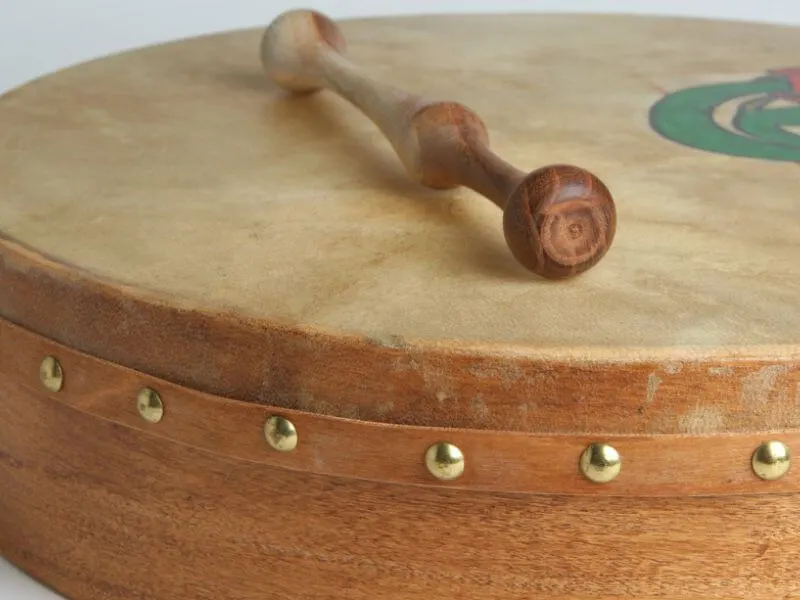
Even though it may seem strange, songs, jokes, and games have long been a part of wakes, especially for the deaths of elderly people.
The deaths of younger people, or deaths due to sad circumstances, were more somber events.
Songs and pranks were not meant to be disrespectful to the person who died, but instead honor their life and share memories of them.
They also provided people with a break from their grief.
Sad, as well as upbeat songs would have been sung and stories told well into the night.
In the past, games and even pranks were played.
These forms of “divilment” would have included harmless mischief, as well as more questionable activities.
Examples would include shaving the face of any man who fell asleep at a wake.
Tobacco would be mixed with pepper.
Throwing objects (like potatoes or turf) at the mourners in the semi darkness of the candle lit wake room, was also popular.
Card games played at a wake often included the dead person, who would also be dealt a hand from the deck.
Other activities such as matchmaking may seem a little far fetched when one is mourning.
However, wakes have always provided people with a great opportunity to gather and connect socially.
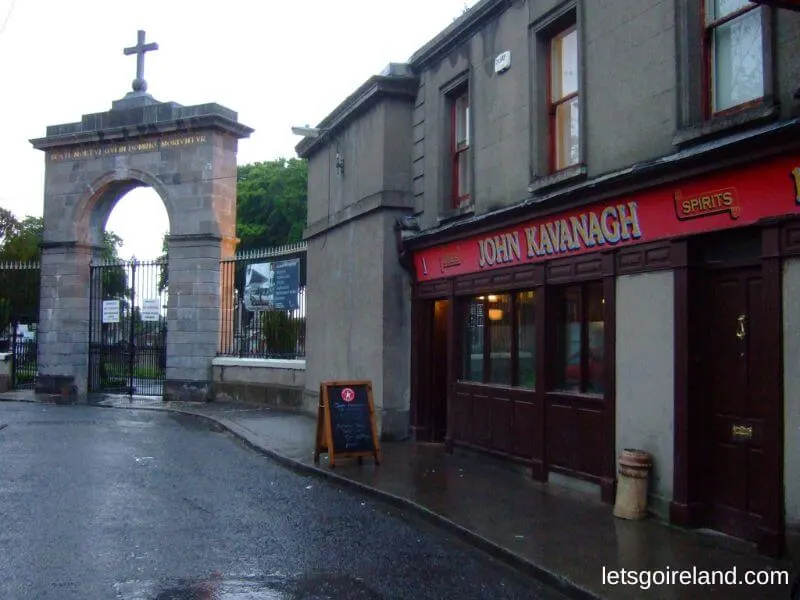
Wake Procession in Ireland
After the vigil, the wake ends with a procession from the home to the church for the funeral Mass and then to the graveyard for the burial.
This procession is an important part of the wake. It is a public way to show grief and acknowledges loss.
Clocks, Snuff, and Other Unique Wake Traditions
As a sign of respect, clocks are often stopped at the time of death, and mirrors are covered to keep the dead from causing any harm.
A traditional practice is to give snuff to visitors as a sign of hospitality and also to make them cry, because crying was seen as a way to let go of grief.
Food and Drink at an Irish Wake
The food and drinks at an Irish wake are very important.
Traditional Irish dishes may be on the menu, and guests can almost always get tea and sandwiches.
Whiskey, beer, and sometimes poitín, which is an Irish moonshine, are some of the drinks people drink.
These are shared with a sense of community, and it is common to raise a glass to the dead.
The Irish Wake Memorial Service or Funeral Reception
After the burial, people often get together again for a funeral reception or “afters.”
This is another chance for the community to come together, share memories of the deceased, comfort the grieving family, and celebrate the life of the departed.
What Do You Say at an Irish Wake?
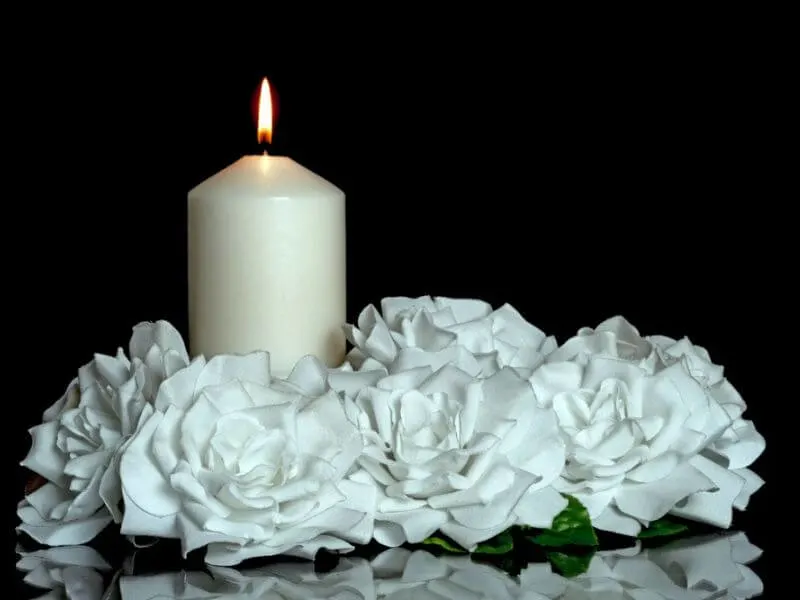
When you go to an Irish Wake, you should say your condolences in a sincere and direct way.
You can say, “I’m sorry for your loss” or “My thoughts are with you and your family.”
It is also common to share personal memories or stories about the person who died.
This not only helps the grieving family, but also helps to celebrate the person’s life.
You will also find some kind Irish funeral blessings in our longer article.
Irish Wake Etiquette
Even though the Irish wake is a social event, it is important to remember that its main goal is to comfort the grieving and pay tribute to the dead.
Conversations should be kind and respectful.
It’s fine to tell funny or encouraging stories about the person who died, but they should be told with love and respect.
Don’t be afraid to show your sadness or even cry at a wake. Doing so is not only okay, but even encouraged.
Irish Wake Toasts
Toasts at an Irish wake do two things. They honor the dead and help the living release their emotions and grief.
A toast is a public way to say how sad you are, how grateful you are to have known the person, or even how happy you are to have known them.
Alcohol has always played a big role in the mourning and waking process.
In more recent times with a greater focus on driving under the influence, this is no longer always the case.
Other non-alcoholic beverages are also likely to be served as an alternative.
Traditional Irish Toasts
Traditional Irish toasts often show how the Irish feel about life and death. They can be an unusual mix of humor, sincerity, and a touch of spirituality.
One common toast says:
Death leaves a heartache no one can heal,
And love leaves a memory no one can steal.
Another classic Irish saying about death is:
May you be in heaven a full half hour
Before the devil knows you’re dead.
How to Propose a Toast
If you find it fitting, you can propose your own toast at an Irish wake.
You stand up, lift your glass, and say what’s on your mind.
It is not about how well you say things, but how sincere you are.
You can share a memory, talk about how you feel, or just give a traditional Irish toast.
After you are finished talking, people will say “Sláinte,”.
This is pronounced “slawn-cha” and means “health” in Irish, and then drink.

What should you bring to an Irish Wake?
It might be a little challenging to know what to bring along with you to a wake. Here you will find some useful tips.
Traditional Wake Gifts
Even though it’s not required, it’s the norm for people who go to an Irish wake to bring something.
People often bring food and drink, like a dish to share, a bottle of whiskey, or things to make tea and sandwiches.
In more recent times, flowers or a gift to a charity that the person who died liked are also popular things to do.
Modern Wake Gifts
Items that show the interests or passions of the dead are becoming more common in modern times.
This could be a framed picture of a loved one, a favorite book, or a CD of music by a favorite artist.
The most important thing is that it should honor and remember the person.
What should you wear at an Irish Wake?
People would traditionally wear black to an Irish wake to show respect and grief.
Men wore suits or other formal clothes most of the time, while women wore dresses or skirts.
Modern Expectations and Etiquette
Even though black is still the most common color, it’s no longer a must.
Most of the time, dark, muted colors are fine.
The important thing is to look polite and traditional.
Importance of Respect and Consideration
No matter what you wear, the most important thing is to treat people with respect and care.
This is a time to show support for the grieving family and honor the person who has died, not to be the center of attention.
The Irish Wake in Modern Times
Even though there are still many traditional parts, the Irish wake has changed to reflect modern life.
Wakes are usually held in funeral homes or funeral parlors as they are also known.
Games and pranks aren’t as important, and the event tends to be more structured and organized.
But the main point of a wake is still the same: people come together to mourn, remember, and celebrate life.
How Irish Wakes have Changed
Some Irish communities, especially those in the diaspora, have replaced or added to the wake with things like memorial services or celebrations of life.
Even with these changes, many parts of the wake stay the same, such as the gathering of the community and the sharing of memories.
The Irish Wake for Irish Diaspora
The Irish wake is still a big deal in Irish communities all over the world.
Even though the details may be different, everyone agrees that a central part of Irish culture is that people come together to mourn and celebrate.
The Irish Wake in Irish Mythology and Literature
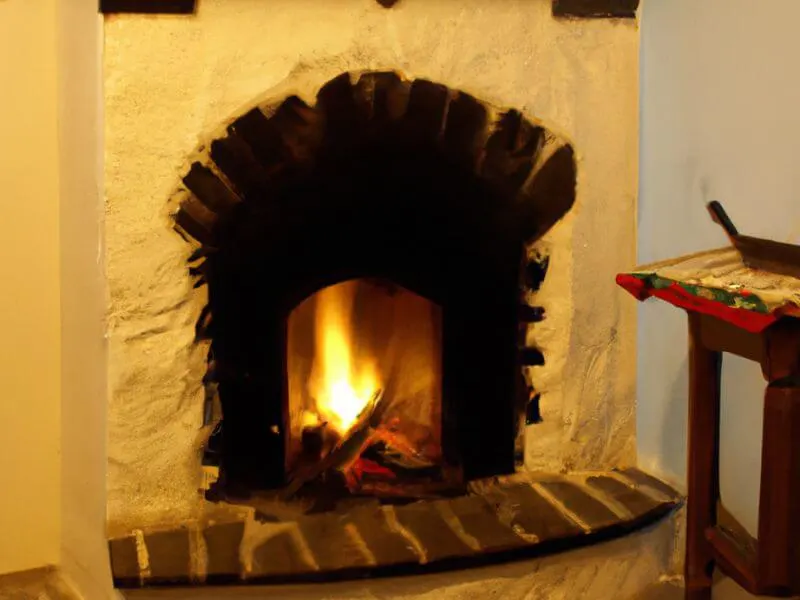
In Irish mythology, wakes were often seen as doors to the afterlife where the spirits of the dead could talk to the living.
People thought that this interaction would help the soul of the dead person on its journey by giving it comfort and direction.
Irish Wakes in Literature and Popular Culture
People have written and made movies about Irish wakes a lot, often focusing on the unique mix of sadness and celebration.
“Angela’s Ashes” by Frank McCourt and “Finnegans Wake” by the famous James Joyce both show how an Irish wake feels, even though their stories are hard to follow.
Irish Wake Frequently Asked Questions
People who don’t know about this Irish custom often want to know what exactly goes on at an Irish wake.
These questions cover everything from how the wake will work in real life to what the rituals mean.
What is the difference between a wake and a funeral?
An Irish wake is a party that is usually held a few days before a funeral.
It is a time for family, friends, and the community to get together, share memories, and comfort each other.
On the other hand, a funeral is a more formal, and often religious, event where the dead person is buried or cremated.
How long is a wake and when does it take place?
A wake usually starts soon after a person dies and can last for one or two days, depending on the culture of the area and what the family wants.
Usually, the loved ones of the deceased person stay up all night with the body to watch over them.
Where is a wake held and who attends one?
In the past, the wake was traditionally held at the home of the deceased, where the body was laid out in the main room.
However, it is often held at a funeral home these days.
A wake is a community event where friends, neighbors, and people from the area are all welcome to come and mourn together.
There is not an official invitation to wake or to a removal.
Some families may opt for a private wake just for immediate family, but this will usually be mentioned in the death notice.
If the death notice states that the person will be “reposing at” a particular funeral home at a certain time, then this is open to the public.
Outside these hours, visiting the funeral home is reserved for family.
It is also acceptable for children to attend a wake or a removal, especially if they were close to the deceased.
What to do at an Irish Wake?
This is your opportunity to meet the close family and friends of the deceased. Sharing your condolences, typically with a solemn handshake is very common.
In the case of large families, mourners usually form a line and take turns to shake the hands of the immediate family.
There may be the possibility to say a short few words to the deceased, offer a prayer or bless them with holy water.
What happens after this depends largely on the type of wake or removal.
Very often there is a lot of small talk with the people in attendance. Time can fly by as you mingle and converse with the mourners.
Wakes in the home may also offer food and drink.
Related article: Discover some Irish prayers and blessings to share with the family.
What is the meaning of the term “Wake”?
The word “wake” comes from the Old English word “wacu,” which means “a watch or vigil.”
It refers to the tradition of keeping watch over the dead from the time they die until they are buried.
What is an Irish Wake Drink?
There is no one drink to have at an Irish wake, but alcohol is usually there.
Whiskey is a popular choice, and some people might even drink poitín, which is an Irish distilled drink.
There is also likely to be plenty of tea and coffee, as well as non-alcoholic beverages.
The Guide to Organizing an Irish Wake
There are several steps to planning an Irish wake.
First, the dead person’s body is cleaned and set out.
The family then asks friends and people from the neighborhood to come pay their respects.
Food and drinks are made, and space is made for talking, telling stories, and remembering the past.
Lastly, plans are made for the funeral procession and gravesite.
What Not to Forget for a Wake
When planning a wake, it’s important to think about where it will be held, what food and drinks will be served, how people will be invited, and how long the wake will last.
Family and close friends should sit closest and be more involved in the proceedings as a whole.
Irish Wakes
Irish funeral traditions around wakes help people deal with grief, bring people together, and keep their culture connected to the past.
Even though they may change with the times, keeping them alive is a good way to keep Irish history alive.
For more related articles, you can check out the following:
